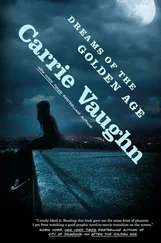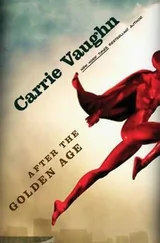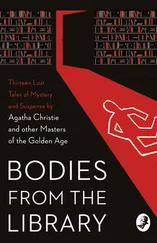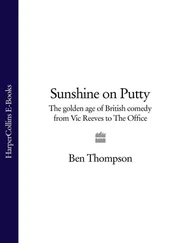Albert Paine - The Car That Went Abroad - Motoring Through the Golden Age
Здесь есть возможность читать онлайн «Albert Paine - The Car That Went Abroad - Motoring Through the Golden Age» — ознакомительный отрывок электронной книги совершенно бесплатно, а после прочтения отрывка купить полную версию. В некоторых случаях можно слушать аудио, скачать через торрент в формате fb2 и присутствует краткое содержание. Жанр: foreign_prose, Путешествия и география, на английском языке. Описание произведения, (предисловие) а так же отзывы посетителей доступны на портале библиотеки ЛибКат.
- Название:The Car That Went Abroad: Motoring Through the Golden Age
- Автор:
- Жанр:
- Год:неизвестен
- ISBN:нет данных
- Рейтинг книги:5 / 5. Голосов: 1
-
Избранное:Добавить в избранное
- Отзывы:
-
Ваша оценка:
- 100
- 1
- 2
- 3
- 4
- 5
The Car That Went Abroad: Motoring Through the Golden Age: краткое содержание, описание и аннотация
Предлагаем к чтению аннотацию, описание, краткое содержание или предисловие (зависит от того, что написал сам автор книги «The Car That Went Abroad: Motoring Through the Golden Age»). Если вы не нашли необходимую информацию о книге — напишите в комментариях, мы постараемся отыскать её.
The Car That Went Abroad: Motoring Through the Golden Age — читать онлайн ознакомительный отрывок
Ниже представлен текст книги, разбитый по страницам. Система сохранения места последней прочитанной страницы, позволяет с удобством читать онлайн бесплатно книгу «The Car That Went Abroad: Motoring Through the Golden Age», без необходимости каждый раз заново искать на чём Вы остановились. Поставьте закладку, и сможете в любой момент перейти на страницу, на которой закончили чтение.
Интервал:
Закладка:
It is one of the oldest-looking places I ever saw – so moldy, so crumbly, and so dim. Though a thousand years older, the arena looks fresh as compared with it, because even sun and storm do not gnaw and corrode like gloom and dampness. But perhaps this is a softer stone. The cloister gallery, which was not built until the twelfth century, is so permeated with decay that one almost fears to touch its delicately carved ornamentations lest they crumble in his hands. Mistral has celebrated the cloister portal in a poem, and that alone would make it sacred to the Provence. The beautiful gallery is built around a court and it is lined with sculpture and bas-relief, rich beyond words. Saints and bible scenes are the subjects, and how old, how time-eaten and sorrowful they look. One gets the idea that the saints and martyrs and prophets have all contracted some wasting malady which they cannot long survive now. But one must not be flippant. It is a place where the feet of faith went softly down the centuries; and, taken as a whole, St. Trophime, with its graceful architecture – Gothic and Byzantine, combined with the Roman fragments brought long ago from the despoiled theater – is beautiful and delicate and tender, and there hangs about it the atmosphere that comes of long centuries of quiet and sacred things.
Mistral's museum is just across from the church, but I have already spoken of that – briefly, when it is worth a volume. One should be in a patient mood for museums – either to see or to write of them – a mood that somehow does not go with automobile wandering, however deliberate. But I must give a word at least to two other such institutions of Arles, the Musée Lapidaire, a magnificent collection of pagan and early Christian sarcophagi and marble, mostly from the ancient burial field, the Aliscamp – and the Musée Réattu.
Réattu was an Arlesian painter of note who produced many pictures and collected many beautiful things. His collections have been acquired by the city of Arles, and installed in one of its most picturesque old buildings – the ancient Grand Priory of the Knights of Malta. The stairway is hung with tapestries and priceless arras; the rooms are filled with paintings, bas-reliefs, medallions, marbles, armor, – a wealth of art objects. One finds it hard to believe that such museums can be owned and supported by this little city – ancient, half forgotten, stranded here on the banks of the Rhone. Its population is given as thirty thousand, and it makes sausages – very good ones – and there are some railway shops that employ as many as fifteen hundred men. Some boat building may still be done here, too. But this is about all Arles can claim in the way of industries. It has not the look of what we call to-day a thriving city. It seems, rather, a mediæval setting for the more ancient memories. Yet it has these three splendid museums, and it has preserved and restored its ruins, just as if it had a J. Pierpont Morgan behind it, instead of an old poet with a Nobel prize, and a determined little community, too proud of its traditions and its taste to let them die. Danbury, Connecticut, has as many inhabitants as Arles, and it makes about all the hats that are worn in America. It is a busy, rich place, where nearly everybody owns an automobile, if one may judge by the street exhibit any pleasant afternoon. It is an old place, too, for America, with plenty of landmarks and traditions. But I somehow can't imagine Danbury spending the money and the time to establish such superb institutions as these, or to preserve its prerevolutionary houses. But, after all, Danbury is young. It will preserve something two thousand years hence – probably those latest Greco-Roman façades which it is building now.
Near to the Réattu Museum is the palace of the Christian Emperor Constantine. Constantine came here after his father died, and fell in love with the beauty and retirement of the place. Here, on the banks of the Rhone, he built a palace, and dreamed of passing his days in it – of making Arles the capital of his empire. His mother, St. Helene, whose dreams at Jerusalem located the Holy Sepulcher, the True Cross, and other needed relics, came to visit her son, and while here witnessed the treason and suicide of one Maximus Hercules, persecutor of the Christians. That was early in the fourth century. The daughter of Maximus seems to have been converted, for she came to stay at the palace and in due time bore Constantine a son. Descendants of Constantine occupied the palace for a period, then it passed to the Gauls, to the Goths, and so down the invading and conquering line. Once a king, Euric III, was assassinated here. Other kings followed and several varieties of counts. Their reigns were usually short and likely to end with a good deal of suddenness. It was always a good place for royalty to live and die. Until the beginning of the nineteenth century it was known as the "House of the King," but it was a ruin by that time. Only portions of it remain now, chiefly a sort of rotunda of the grand hall of state. Very little is left to show the ancient richness of its walls, but one may invite himself to imagine something – its marbles and its hangings – also that it was just here that M. Hercules and King Euric and their kind went the violent way; it would be the dramatic place for those occasions.
One may not know to-day just what space the palace originally covered, but it was very large. Portions of its walls appear in adjoining buildings. Excavations have brought to light marbles, baths, rich ornamentations, all attesting its former grandeur. Arles preserves it for its memories, and in pride of the time when she came so near to being the capital of the world.
Chapter VI
THE WAY THROUGH EDEN
There is so much to see at Arles. One would like to linger a week, then a month, then very likely he would not care to go at all. The past would get hold of him by that time – the glamour that hangs about the dead centuries.
There had been rain in the night when we left Arles, much needed, for it was the season of drought. It was mid-morning and the roads were hard and perfect, and led us along sparkling waysides and between refreshed vineyards, and gardens, and olive groves. It seemed a good deal like traveling through Eden, and I don't suppose heaven – the automobilist's heaven (assuming that there is one) – is much better.
I wish I could do justice to the Midi, but even Mistral could not do that. It is the most fruitful, luscious land one can imagine. Everything there seems good to eat, to smell of – to devour in some way. The vines were loaded with purple and topaz grapes, and I was dying to steal some, though for a few francs we had bought a basket of clusters, with other luncheon supplies, in Arles. It finally became necessary to stop and eat these things – those grape fields were too tempting.
It is my opinion that nothing in the world is more enjoyable than an automobile roadside luncheon. One does not need to lug a heavy basket mile after mile until a suitable place is found, and compromise at last because the flesh rebels. With a car, a mile, two miles, five miles, are matters of a few minutes. You run along leisurely until you reach the brook, the shade, the seclusion that invites you. Then you are fresh and cool and deliberate. No need to hurry because of the long tug home again. You enjoy the things you have brought, unfretted by fatigue, undismayed by the prospect ahead. You are in no hurry to go. You linger and smoke and laze a little and discuss the environment – the fields, the growing things, the people through whose lands and lives you are cutting a cross-section, as it seems. You wonder about their customs, their diversions, what they do in winter, how it is in their homes. You speculate on their history, on what the land was like in its primeval period before there were any fields and homes – civilized homes – there at all. Perhaps – though this is unlikely – you know a little about these things. It is no advantage; your speculations are just as valuable and more picturesque. There are many pleasant things about motor gypsying, but our party, at least, agreed that the wayside luncheon is the pleasantest of all.
Читать дальшеИнтервал:
Закладка:
Похожие книги на «The Car That Went Abroad: Motoring Through the Golden Age»
Представляем Вашему вниманию похожие книги на «The Car That Went Abroad: Motoring Through the Golden Age» списком для выбора. Мы отобрали схожую по названию и смыслу литературу в надежде предоставить читателям больше вариантов отыскать новые, интересные, ещё непрочитанные произведения.
Обсуждение, отзывы о книге «The Car That Went Abroad: Motoring Through the Golden Age» и просто собственные мнения читателей. Оставьте ваши комментарии, напишите, что Вы думаете о произведении, его смысле или главных героях. Укажите что конкретно понравилось, а что нет, и почему Вы так считаете.












